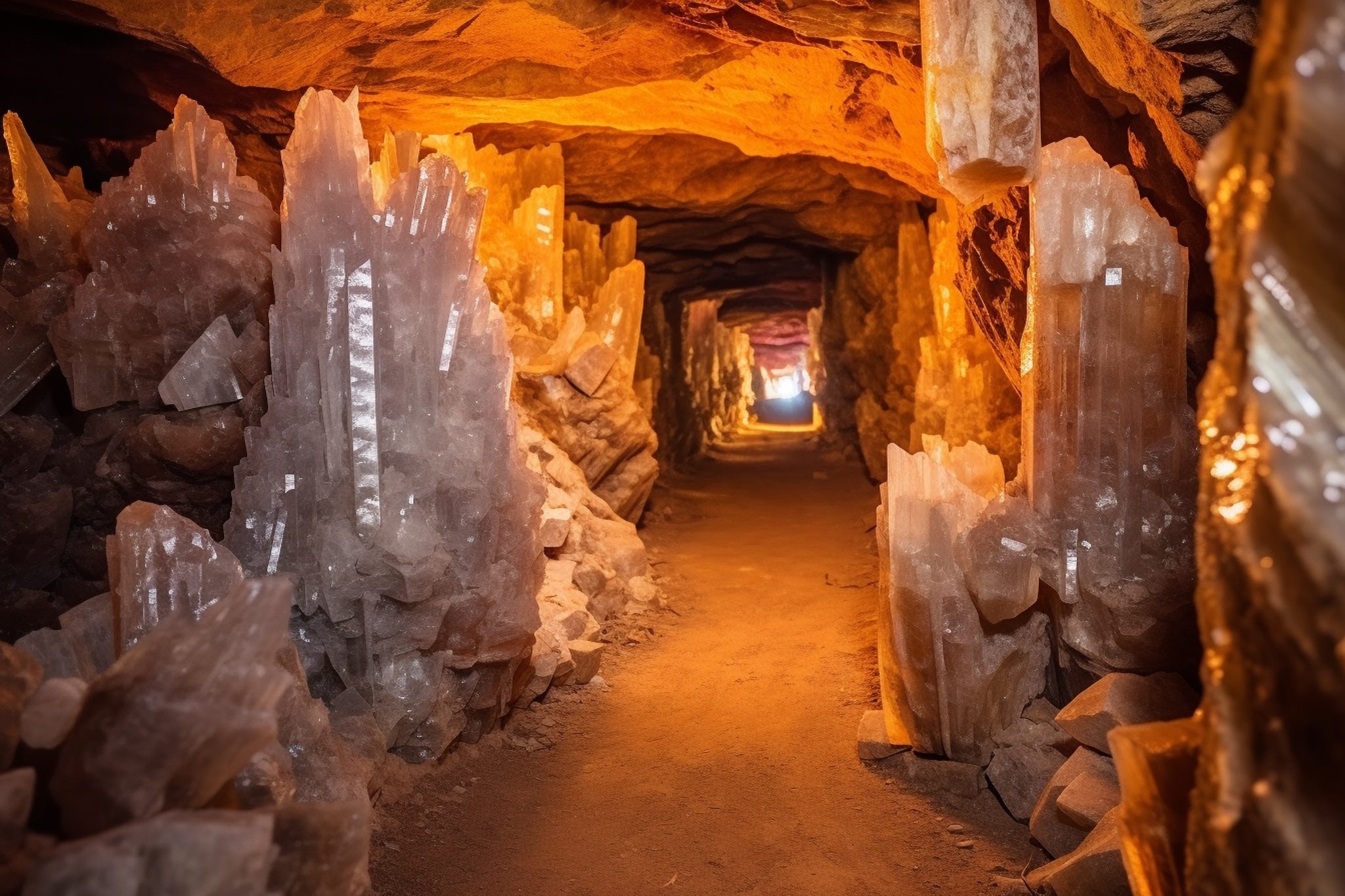Crystals have captivated humans for millennia, from ancient talismans to modern wellness tools. But with their rising popularity, a question lingers: do crystals really work, or is it all in our minds? In this Q&A guide, we dive into the science behind crystals, explore their metaphysical properties, and offer a balanced perspective for skeptics and believers alike. Whether you’re curious about the piezoelectric effect of Quartz or the calming energy of Amethyst, let’s uncover what makes crystals so special in 2025.
Q1: What Are Crystals, Scientifically Speaking?
Crystals are solid materials with atoms arranged in a highly ordered, repeating pattern, forming stunning structures like the purple hues of Amethyst or the clarity of Quartz. This atomic precision gives crystals unique physical properties, such as:
-
Piezoelectricity: Certain crystals, like Clear Quartz, generate an electric charge when compressed. This is why Quartz is used in watches, computers, and ultrasound devices.
-
Optical Properties: Crystals like Selenite refract light, creating their luminous glow, which may contribute to their calming aesthetic.
-
Thermal Conductivity: Some crystals feel cool or warm to the touch, enhancing their tactile appeal in meditation.
Beginner Tip: Hold a Clear Quartz to feel its smooth, cool surface—it’s a reminder of its structured atomic beauty.
Advanced Tip: Research crystal lattice structures (e.g., hexagonal for Quartz) to understand how their form influences their energy.
Q2: Is There Scientific Evidence That Crystals Heal?
Direct scientific evidence for crystal healing is limited, as most studies focus on physical properties rather than metaphysical claims. However:
-
Placebo Effect: Believing in a crystal’s power can reduce stress or boost mood, a well-documented psychological phenomenon. For example, holding Rose Quartz may feel soothing due to its association with love.
-
Vibrational Resonance: Some researchers speculate that crystals’ atomic vibrations could subtly interact with human energy fields, though this is unproven.
-
Aesthetic Impact: The beauty of crystals can trigger positive emotions, supporting mental well-being.
While science hasn’t fully validated healing claims, the lack of evidence doesn’t negate personal experiences. Crystals may work through a blend of psychology, intention, and sensory connection.
Beginner Tip: Experiment with a crystal like Rose Quartz and note how it makes you feel—your experience matters.
Advanced Tip: Combine crystals with mindfulness practices to enhance their placebo effect, focusing on measurable outcomes like reduced stress.
Q3: How Do Metaphysical Beliefs Explain Crystal Energy?
In crystal healing, stones are believed to carry unique vibrations that interact with your energy field or chakras. For example:
-
Amethyst: Associated with the crown chakra, it’s thought to calm the mind and enhance intuition.
-
Black Tourmaline: Believed to absorb negativity, grounding and protecting your energy.
-
Citrine: Said to attract abundance by resonating with the solar plexus chakra.
These beliefs stem from ancient traditions (e.g., Chinese jade healing, Egyptian lapis lazuli amulets) and modern practices, where intention amplifies a crystal’s effect.
Beginner Tip: Choose a crystal that resonates with your goal (e.g., Selenite for clarity) and set an intention to focus its energy.
Advanced Tip: Study chakra correspondences to align crystals with specific energy centers for targeted healing.
Q4: Can Skeptics Benefit from Crystals?
Absolutely! You don’t need to believe in metaphysical properties to enjoy crystals. Here’s how skeptics can approach them:
-
Aesthetic Enjoyment: Display crystals like Agate or Green Phantom Quartz for their beauty, which can uplift your mood.
-
Mindfulness Tool: Use a crystal as a focal point during meditation to anchor your attention, reducing stress.
-
Symbolic Reminder: Carry a crystal to remind you of a goal, like Citrine for confidence, leveraging the placebo effect.
Beginner Tip: Try holding a Clear Quartz during a 5-minute breathing exercise to see if it helps you focus.
Advanced Tip: Create a “skeptic’s journal” to track your mood or focus when using crystals, comparing with and without them.
Q5: Are There Risks to Using Crystals?
Crystals are generally safe, but keep these in mind:
-
Physical Safety: Avoid ingesting crystals or using toxic ones (e.g., Malachite) in water elixirs.
-
Over-Reliance: Don’t replace professional medical or mental health care with crystals.
-
Ethical Sourcing: Choose crystals from reputable sources to avoid supporting harmful mining practices.
Beginner Tip: Start with safe, common crystals like Amethyst or Rose Quartz, and cleanse them before use.
Advanced Tip: Research crystal toxicity (e.g., Mohs hardness, solubility) before advanced practices like elixirs.
Final Thoughts
The debate over whether crystals “really work” is less important than how they make you feel. Scientifically, their physical properties are fascinating, from piezoelectricity to optical beauty. Metaphysically, their energy resonates with countless practitioners worldwide. Whether you’re a skeptic or a believer, crystals offer a unique way to connect with intention, beauty, and yourself. Experiment, stay open, and let your experience guide you in 2025.
Do you lean toward the science or the spirituality of crystals, or both? Share your thoughts in the comments! For more crystal insights, follow us on Facebook or Instagram @zenoraenergy, or reach out at info@zenoraenergy.com.

Share:
Ethical Crystal Sourcing: What You Need to Know Before Buying
Crystal Pairings: How to Combine Stones for Maximum Energy